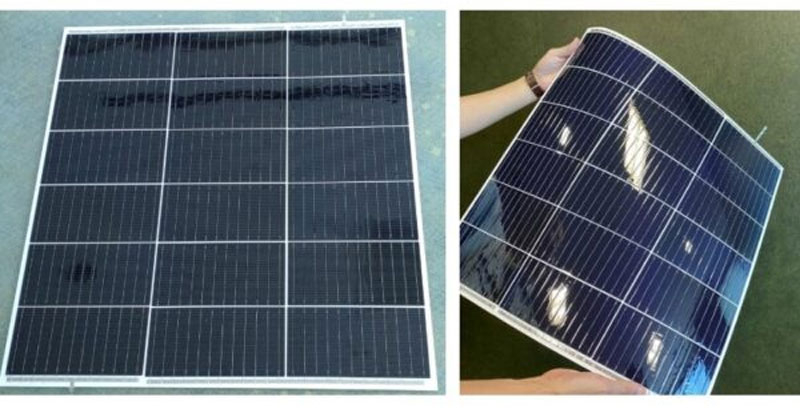Softbank announced the completion of development of record-breaking lightweight ultra-thin heterojunction solar panels made of silicon. The panels are being developed to power flying stratospheric platforms that can replace cell phone towers in hard-to-reach corners of the planet. A lightweight panel weighing 665 g/m2 with an efficiency of 22.2% was an intermediate step towards achieving the target of 500 g/m2.

Image source: Softbank
Stratospheric communication platforms, or HAPS (high altitude pseudo satellites), are mainly represented by airships. Flexible solar cells will be attached to the sloping backs and sides of these airy behemoths. The elements should be light and quite effective, but inexpensive. That’s why Softbank settled on silicon. Lightweight multilayer solar cells using materials that are more efficient than crystalline silicon have already been used in astronautics, but they are three orders of magnitude more expensive, which makes the use of space technologies on Earth impractical.
Commissioned by Softbank by the Chinese company LONGi and the Japanese Fujipream Corporation, the flexible heterojunction solar cell consists of a protective sheet, photocells, sealant and a back sheet with thicknesses of 25 µm, 80 µm, 150 µm and 50 µm, respectively. To connect the photocells to each other, a copper conductor 250 microns thick is used, soldered with low-temperature solder. A solar panel created in this way with dimensions of 563 × 584 mm weighs only 218.5 g. A panel with an area of 1 m2 will weigh 665 g. The measured efficiency of the panel was 22.2%.
LONGi and Fujipream are exploring options to further reduce the weight of solar cells for stratospheric flying platforms. Next up is the 500 g/m2 barrier. If these panels are mass produced, they will be useful for a variety of applications on Earth – in construction, automotive and other areas where loose but uneven surfaces can collect energy from sunlight.